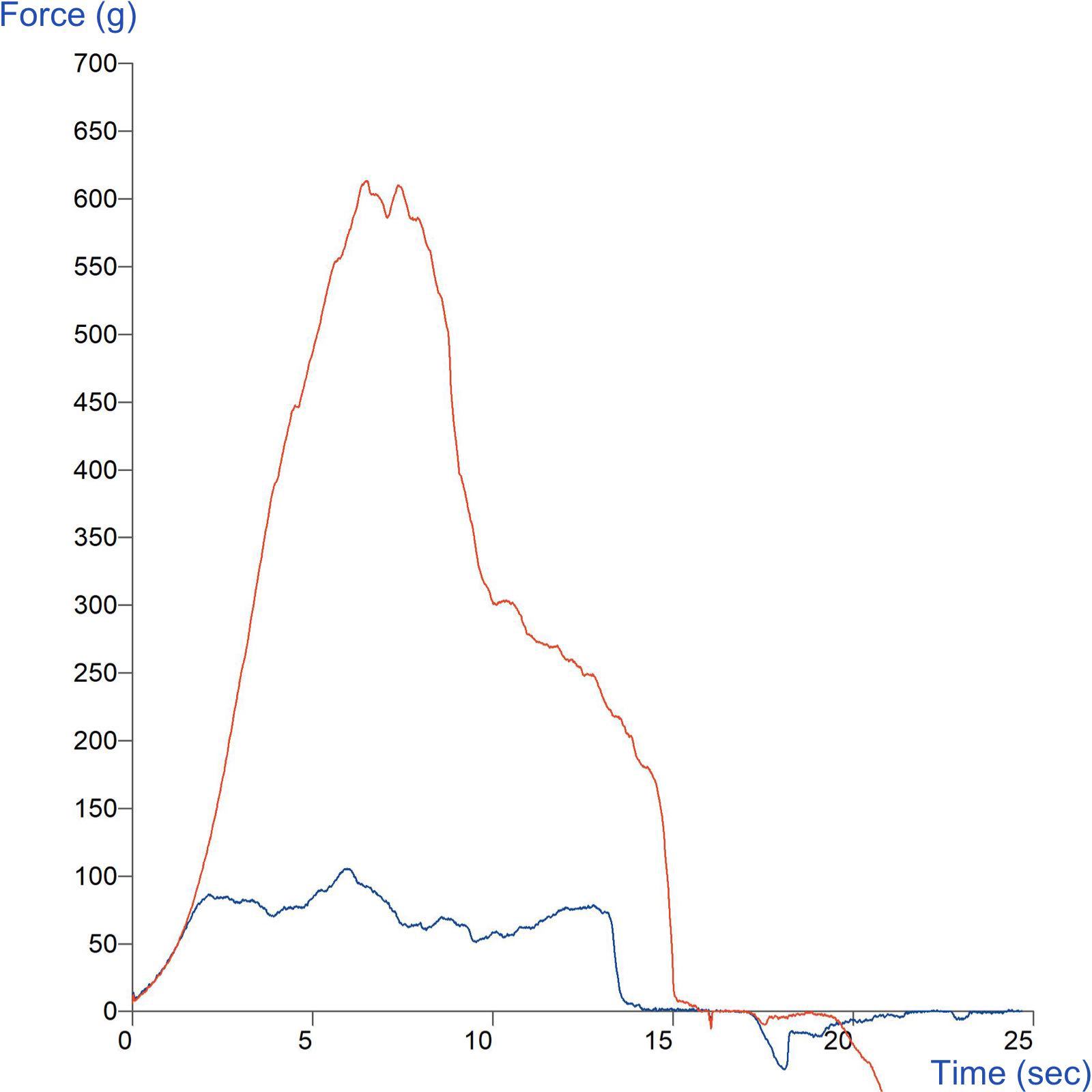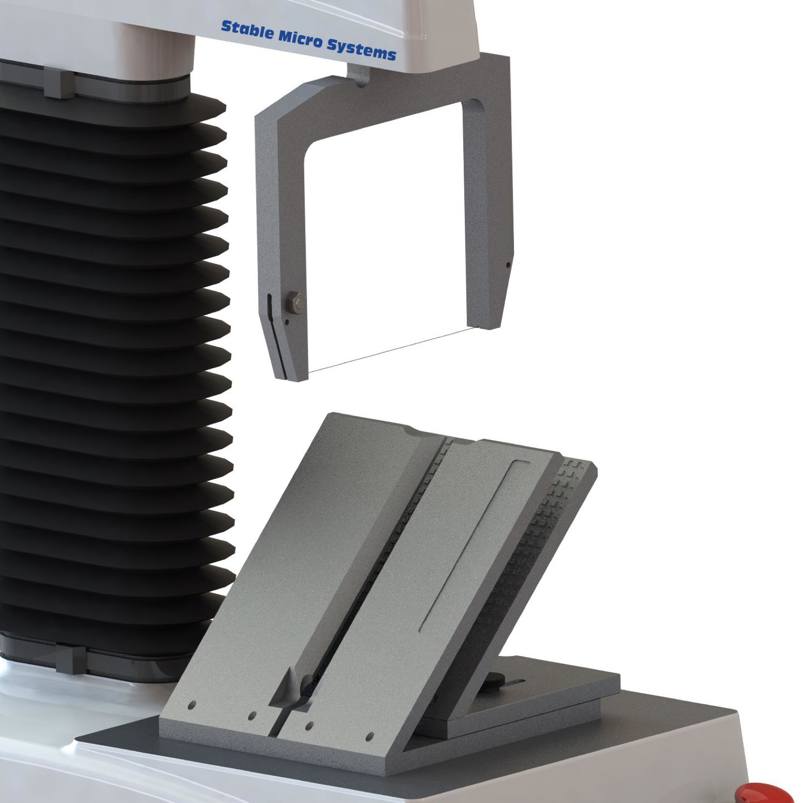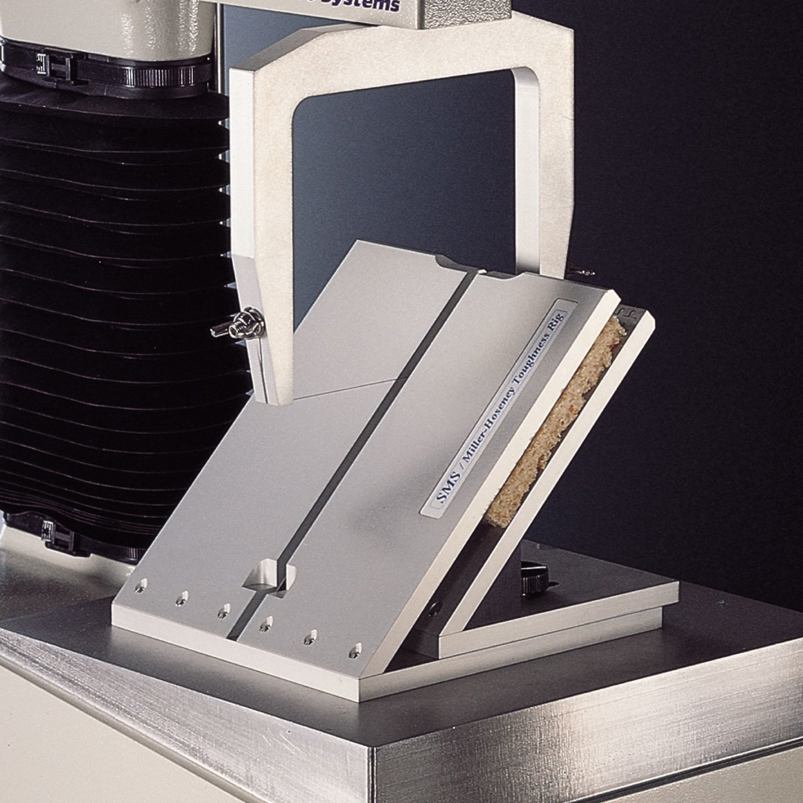Product overview
A texture factor of bread, which was looked at more frequently as microwaving became more popular, is the rubberiness, or elasticity, of the crumb as it is torn. Study of this factor requires attachment of a attachment called the Miller-Hoseney Toughness Rig which was developed in association with the Department of Grain Science at Kansas State University. It is well known that stale bread can be refreshed by heating. However, when re-heated by microwave the bread becomes tough and difficult to chew. The rig was developed in conjunction with Prof. Hoseney and Dr. Miller to assist food manufacturers in quantifying and overcoming problems such as this. By measuring the peak force required to pull a wire through a slice of bread, a clear and accurate analysis of toughness is obtained.
The rig comprises two adjustable angled base plates which fix on the Texture Analyser and a support frame, holding a stainless steel cutting wire, which connects directly to the Load Cell. The rig has successfully been used to compare and differentiate the textural qualities of microwave reheated, conventionally reheated and unheated sliced bread.
How does the Miller-Hoseney Toughness Rig work?
Typical graph

Technical information
Ideal sample form
A solid material which can be held between two plates in order that a wire can be pulled upwards through it.
Benefits and limitations
- The wire tension can be set to a chosen value and checked when required.
Installation, Chemical compatability, Cleaning and maintenance
Installation
Full installation instructions are provided within the Education Zone of the latest Exponent/Connect software version and on the technical information sheet accompanying this product.
Chemical compatibility
Stable Micro Systems probes and attachments are commonly made from four materials: anodised aluminium (AA6082 T6), stainless steel (316 T), Delrin (acetyl copolymer) and Perspex (polycarbonate).
In general use, probes and attachments made from these materials will be suitable for testing food products and inert non-food materials.
The four materials listed above are not universally resistant to all types of chemicals and as such the compatibility of the probe/attachment material with the product (to be tested) must be established to prevent damage to the probes and attachments. If the compatibility of the product with the probe is unknown to the customer then the chemical information about the product (Material Safety Data Sheet or Product Data Sheet) should be submitted to Stable Micro Systems. Stable Micro Systems will then assess the suitability of the probe/attachment material for use with the product and advise accordingly. If this advice is not sought then Stable Micro Systems will not accept liability for probes/attachments damaged by chemical attack from the product being tested.
Cleaning and maintenance
All probes and attachments may be cleaned in warm (or hand hot) water using a mild detergent. A soft brush may be used but abrasive cleaning aids should be avoided. Stable Micro Systems products should not be microwaved or cleaned in a dishwasher.
Screw threads should be lightly lubricated after drying using a light lubricant, e.g. petroleum jelly, mineral oil. This will aid the fitting and unscrewing of the item. Each component of a probe or attachment should be wrapped separately when stored, to avoid scratching or chipping. This will safeguard against any unnecessary damage to the accessory.


